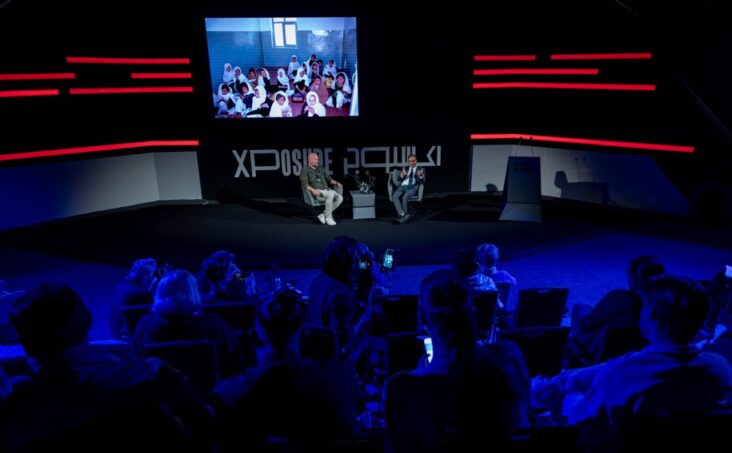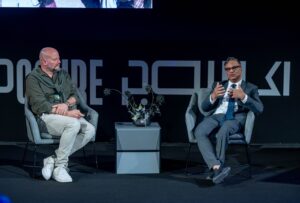Bridging The Worlds Of Human Conflict And Animal Zen At Xposure 2025

Humanitarian aid worker and photographer Nitin Madhav narrated his incredible experiences as he straddled the human and animal worlds in a Fireside Chat titled “Finding Balance: Humanitarian Aid and Serenity of Nature” with photography consultant and collector Lars Boering at the ongoing 9th annual International Photography Festival (Xposure) at Aljada, Sharjah on Tuesday.
Being patted on the back by a mountain gorilla in Uganda or touched on the head by an African elephant in Kenya’s Amboseli National Park is not every wildlife photographer’s idea of a day out in the wild, but Madhav calls himself lucky to have that connect with nature despite a personal tragedy that robbed him of a leg during a rebel attack in Rwanda in 1997 that had killed three of his colleagues. Madhav, who has dedicated his career to supporting people recovering from conflict, finds refuge in photographing the tranquillity of the animal world.
Washington DC-based Madhav, who has worked in several disaster zones from Afghanistan to Rwanda primarily with USAID, walked down memory lane to trace his evolution as a photographer. The primary rule he follows as a photographer is to be respectful of others and to seek permission before clicking a picture, having worked in countries and cultures where privacy especially of his women subjects are important. “I learnt it the hard way. I develop a personal rapport with the person before I ask them if I can take their photograph,” said the aid worker whose 30-year career graph has seen inspiring stories of helping young Afghan girls pursue their education in an earlier post-Taliban phase and evacuating them later to the US after the Taliban took control again.
Madhav, whose candid portraits dwell on the eyes of the person or the animal he photographs, said he has strict ethics emanating from his life as an aid worker which prevents him from profiting on his photographs. He channels funds from the sale of his photographs on cheetahs, elephants, lions and rhinos for their conservation.
The transition from human to wildlife photography had happened during the pandemic when he opted to spend a month photographing lions in the Serengeti national park in Tanzania. Madhav, who is active on Instagram and YouTube, said people started buying his wildlife pictures soon, and one of them fetched him as much as US$13000.
“Being in nature gives a whole sense of zen,” said the India-born official who had developed a mental block about photographing gorillas after the mishap in Rwanda that gave him the prosthetic left leg. A friend convinced him to take a six-hour trek to shoot Uganda’s mountain gorillas, which had resulted in his famous encounter with Rokundo, the male gorilla. The photographs from that expedition are on display at Xposure, which Madhav said was an incredibly nurturing experience. He plans to shoot pictures of the gorillas of Cameroon next.
“I don’t have a lot of fear for animals; I feel I have a connection with them and they look me in the eye for some time,” he said remembering his brush with Craig the tusker in Amboseli or the male lion in Serengeti.
Organised by the Sharjah Government Media Bureau (SGMB), Xposure 2025 runs until February 26. To learn more about the global celebration platform for visual storytelling, visit https://xposure.net/.


